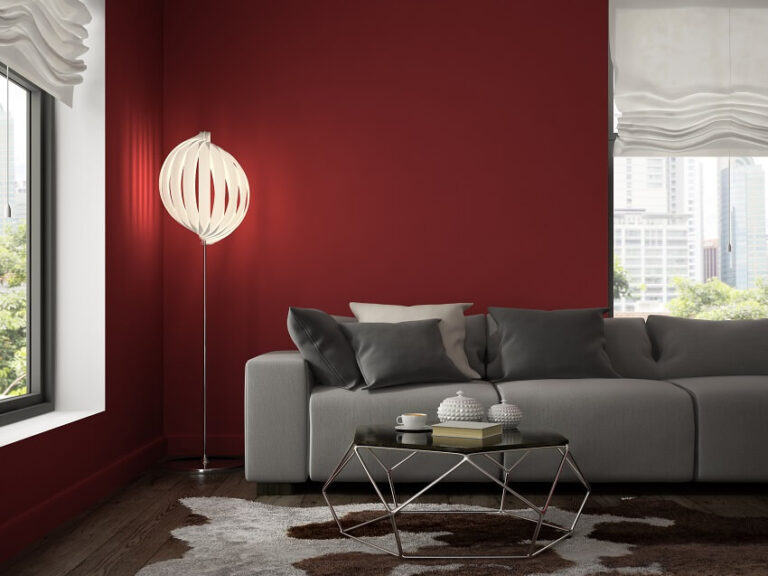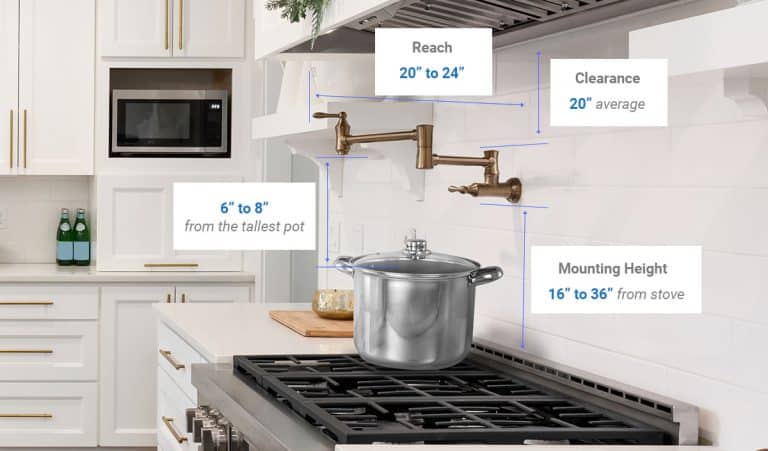Floor Tile Sizes (Standard Dimensions Guide)

Flooring is one of the many ways a homeowner can elevate the total look of their home during construction or renovation. Many floor tile sizes are available with different designs for every room of a home, from the kitchen to the bathroom floor. One can achieve a traditional grid pattern with specific tiles, but they can also achieve an edgy diner-style checkerboard pattern with black and white colors.
Aside from the floor, tiles are also very versatile in that they can be used for walls. Kitchens and bathrooms are usually where homeowners can select designs for tiles to be used on walls.
Standard Floor Tile Sizes
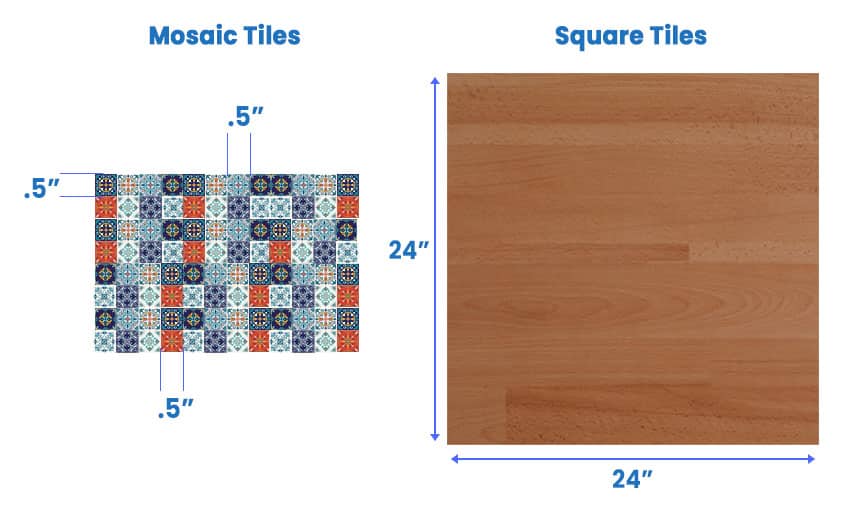
Different types of floor tiles are available in many colors, styles, shapes, and sizes for the homeowner to fully personalize their space and interior design. The size will also depend on what material they are made of and their specific and intended use. Through the years, the standard tile size has also increased with the need and trend of larger pattern floor designs.
Standard tile sizes are available from the smaller .5 by .5 inches or 1.27 by 1.27-centimeter mosaic tiles to the larger 24 by 24 inches or 61 by 61 centimeters products found in most commercial spaces.
The most popular standard floor tile sizes are 12 by 12 inches, 18 by 18 inches, and 12 by 24 inches in width. Do keep in mind that while an individual piece may be referred to as being 12 by 12 inches, the actual ‘true’ measurement is often 11-7/8 inches by 11-7/8 inches.
How Thick Are Flooring Tiles?
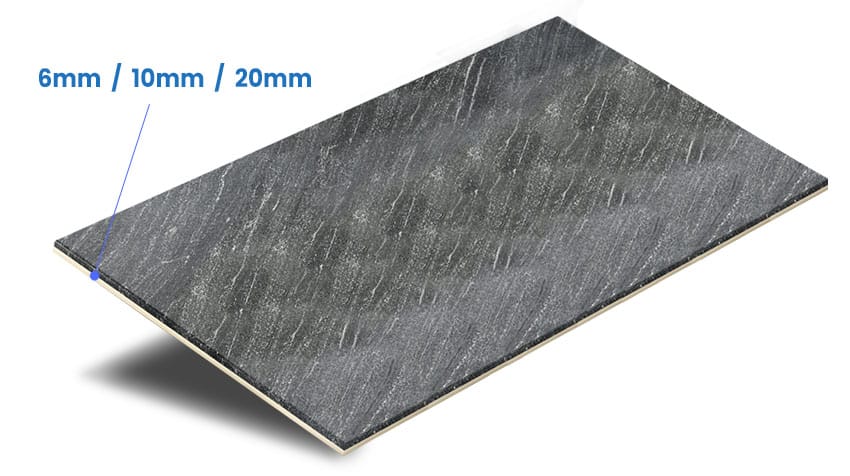
Other than the length and width of tiling, another dimension to consider is the floor tile’s thickness. There are ultra-slim tiles available at 6 millimeters or .24 inches and also standard ones at 10 millimeters or .39 inches, which are the most frequently used and versatile thickness. Tiles used for walls are usually in this or between these sizes.
If a homeowner wants thicker tiles, the hefty 20-millimeter products are some of the toughest available for pavers. Thickness is critical because it will dictate how high the floor will end up after construction or renovation.
Rectangular Tile Dimensions
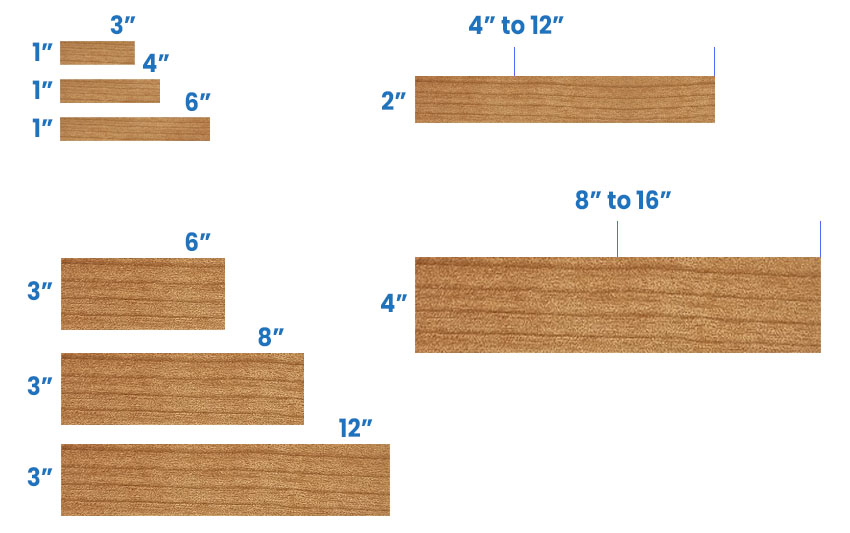
Aside from square tiles, there are also rectangular shapes that homeowners can utilize for their floors and walls. Some of the most common rectangular designs are subway tiles reminiscent of the walls of New York subways. These styles are fashionable and available in many colors and sizes.
Smaller rectangular tiles are available with a height of 1 inch or about 3 centimeters with a width of 3, 4, and 6 inches or 8, 10, and 15 centimeters. An elevation of 2 inches or 5 centimeters is also available, with widths running from 4 to 12 inches or about 10 to 30 centimeters.
Medium subway tiles are available with a height of 3 inches or 8 centimeters, with a width of 6, 8, and 12 inches or 15, 20, or 30 centimeters. If any homeowner wants something bigger, a good height is 4 inches or 10-centimeter subway tiles with a width from 8 to 16 inches or 20 to 41 centimeters.
Bathroom Flooring Tile Dimensions
Aside from the design aspect considered for choosing a bathroom tile, there is also the important proportionality. Large format tiles will often look out of place and awkward in a smaller bathroom, and many cuts need to be utilized for them to work visually for a room. So, what are the available sizes for bathroom flooring?
Any homeowner can choose to use 1-inch or 3 3-centimeter tiles for their smaller bathroom, while large shower floors can use sizes that are at least 12 inches square or 30 centimeters.
Small Bathroom Tile
A small bathroom or shower pan will require smaller pieces so everything will look proportionate and cohesive. There are 4 by 4 inches or 10 by 10 centimeters products one can use, while smaller mosaic tiles are also available at 1 inch by 1 inch or about 3 centimeters square.
Small tiles are used for smaller showers, not just to be laid down on mortar so that the water can flow to the drain, but they also offer a better grip for the feet on a wet floor.
Maximum Size For Shower Floor Tile
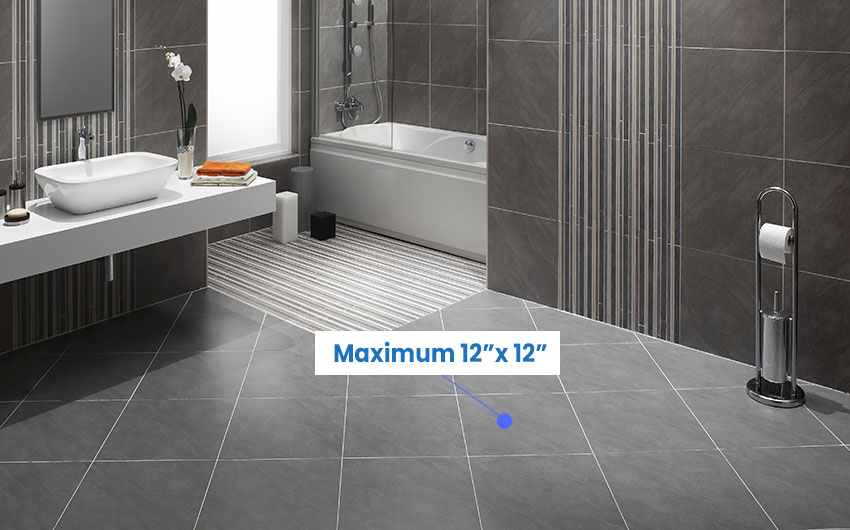
Tiles are available for as big as 24 by 24 inches or 61 by 61 centimeters, but when it comes to the washroom, there is a maximum size one should use to ensure maximum water flow and also how pleasing it will look in the end.
Bathroom floor tile designs should utilize a maximum size of 12 by 12 inches or 30 centimeters square. This is the largest one can find that is still commonly used for flooring since some bigger than 12 inches square will be primarily used for wall tiling.
Best Size Tile For Shower Flooring
The best tile size for any shower floor will depend on how big or small the shower pan, or the bathroom is. For small shower pans or floors, the best size to use is the 1-inch square products that are primarily mosaic tiles.
Medium and more enormous showers or bathrooms will have more flexibility since homeowners can choose to go up to 12 inches square for their flooring. Twelve-inch or 30-centimeter tiles are also easy enough to cut with saws for easy gauging.
Best Floor Tiles Size For Living Room
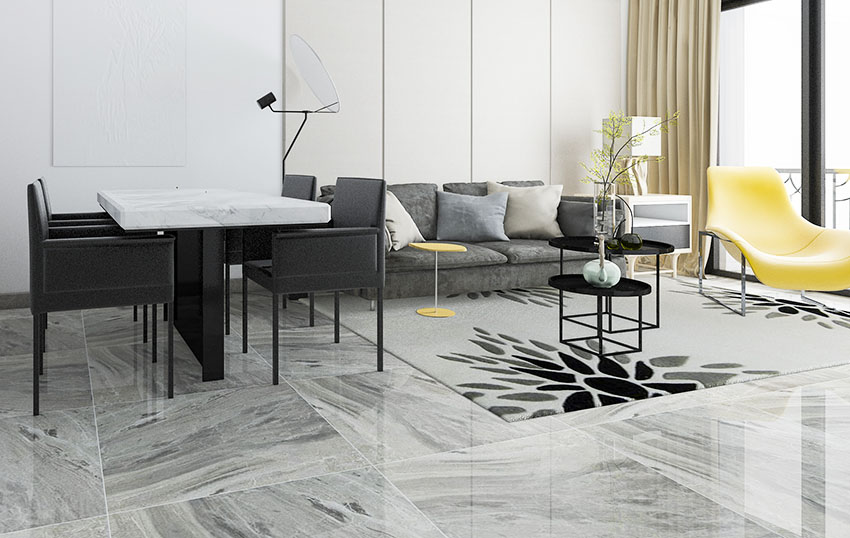
There are rules to guide any homeowner when it comes to tiling bathrooms, and when it comes to living rooms, there are also specific tips and tricks they can follow to ensure the maximum aesthetics of their spaces.
The ideal tile size for living rooms is slightly larger at 12 inches square to 18 inches square, or about 30 centimeters square to 46 centimeters square.
Since the space will be slightly more sizable, the tiles must also be more extensive. The only downside is that it will cost more per piece than smaller mosaics. Visit our living room flooring ideas here.
What Size For Kitchen Tile On the Floor?
For the kitchen, the best floor tile to use is the ones that are 8 to 12 inches square or approximately 20 to 30 centimeters. This will also depend and can vary considering how small or large the kitchen will be.
Still, the perfect rule of thumb is choosing the 12 inches or 30 centimeters square floor tiles since they are standard and will have various options considering style and design to fit any kitchen look and aesthetic. See our gallery of types of kitchen floor tiles here.
Best Size For Herringbone Pattern Floor
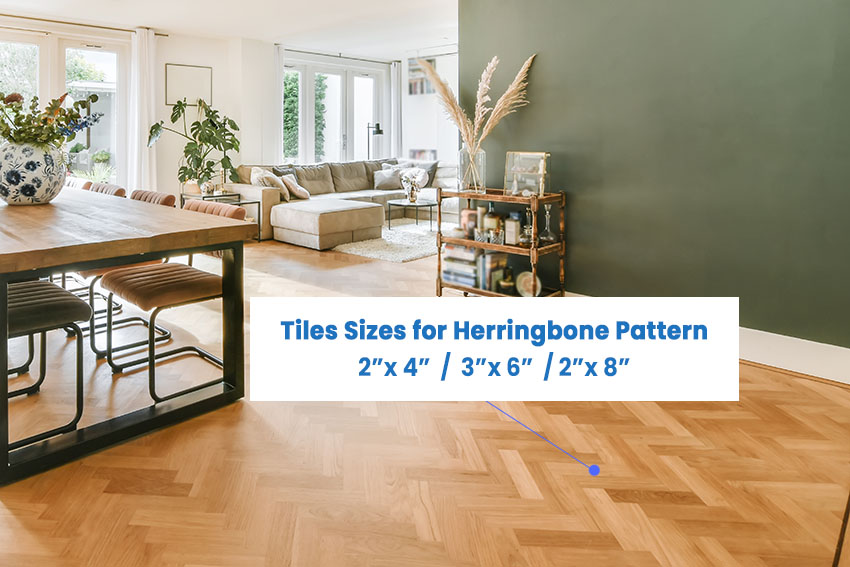
Herringbone is a classic pattern commonly used for tiling, seen from down the floor to the walls in many kitchens. They are named like so since they follow the intricate bone formation of herring fish. If a homeowner wants to achieve this look for their homes, getting the size right is vital: not too small and too expansive.
The best size for achieving a herringbone pattern is about 2 by 4 inches or 5 by 10 centimeters. There are also rectangular tiles 3 by 6 inches or 8 by 15 centimeters in size.
If a homeowner wants a more evident herringbone pattern for their floors and walls, a good product size is using the rectangular 2 by 8 inches or 5 by 20 centimeters.
What Size Spacers For Tiles?
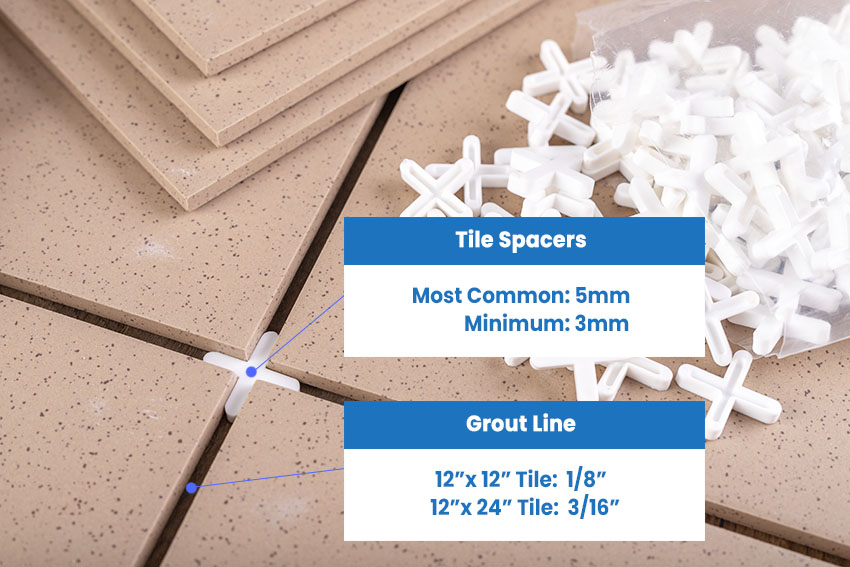
Tile spacers are essential to ensuring that tiling will look professionally installed, even if it is purely DIY-ed. No matter, if a homeowner uses ceramic, stone, or porcelain tiles, the minimum size of tile spacers to use, are the 3-millimeter ones.
The height will depend on the type but usually requires a spacer of .394 inches or 10 millimeters high. However, the most common are the .197 inch or 5-millimeter spacers.
Grout Size for 12×12 Tile
The best grout size for a 12 by 12 inches or 30-centimeter square tile should be the smallest possible grout joint since opting for something bigger requires more waste material. Go for a grout joint 1/8 inches wide; this is the perfect size to fit.
What Size Grout Line For 12×24 Tile?
Tiles with a larger format are increasingly popular due to their more modern and minimalist style, giving a space a more contemporary look. So, what is the perfect grout space for more oversized tiles, specifically the 12 by 24 inch dimension?
The ideal grout size for this tile is 3/16 inches. A surefire way of knowing is asking for the manufacturer’s suggestion or recommendation.
What Trowel Size For 12×12 Tile?
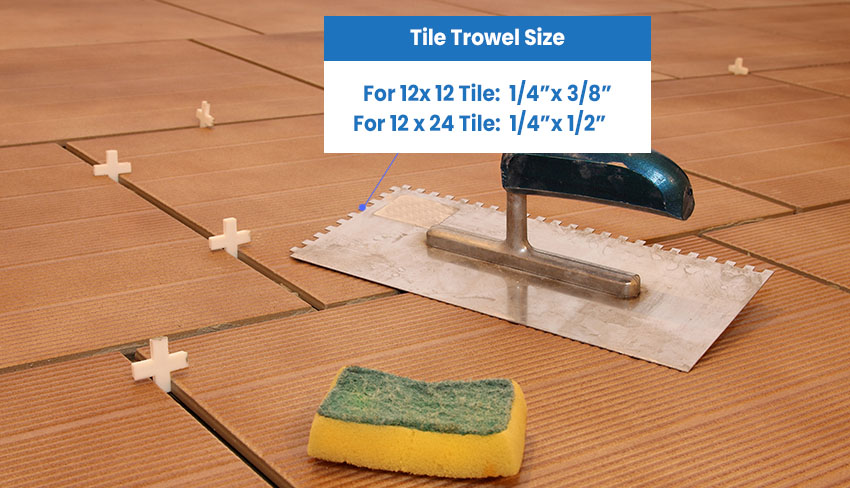
Another essential aspect of tiling is knowing the right trowel size for specific tile sizes. For a standard 12 by 12 inches or 30 centimeters square of floor tile, the trowel should be about 1/4 inch by 3/8 inch or 0.64 by 0.95 centimeters.
What Trowel Size For 12×24 Tile?
On the other hand, for a 12 by 24 inches or 30 by 61 centimeters tile, the best trowel size is a square-notched trowel with a minimum size of 1/4 by 1/2 inches or about 0.64 or 1.27 centimeters— the maximum size of the square-notched trowel at 1/2 inches square or about 1.27 centimeters square.
Tile Flooring Material Calculator
This tile flooring material calculator will help you determine the materials needed for a room remodel project.
First, measure the room’s dimensions and get its length by width to use the tool. They look at the box of tiles you will be using to determine how much coverage it provides per box.
There are generally wasted materials and occasional breakage with tiles. to account for this, you can select the account for 15% checkbox. To get the results, click ‘calculate’ to determine how many boxes you must purchase to complete your project.
Are there any floor tile sizes we missed? If so, let us know in the comments section below. Visit our guide to porcelain vs ceramic tile for more related content.


